LEARNING OUTCOMES YEAR 1 (PROPEDEUTIC YEAR)
The student demonstrates musical awareness by navigating accurately in tonal space and shows awareness of musical time in metre rhythm and timing.
A collection of frequent occuring patterns is memorized and appplied in different contexts. We do this in two dimensions:
- regarding musical space: pitch
- regarding musical time: tempo, metre and rhythm
Patterns:
- fourth-fifth-octave "anchors"
- chord patterns (for example triad framework, arpeggio's)
- scale patterns
- metrical-rhythmical patterns in common time signatures
- partimento patterns and patterns from jazz standards
Lesson material to be acquired: Traplopen en Springstof deel 1 - G Blok. Broekmans en van Poppel.
Lesson 1: Introductory lesson
Anchor intervals
In our tonal/modal music the (pure) octave and fifth play a key role in our orientation in the pitch space.
They are the intervals you shoud internalize. Develop a mental/aural representation that you can summon at any given moment.
Watch the explanation and demonstration in the VIDEO (submenu at the right).
Use the following exercise which contains a pedal (bourdon) as a tool for your orientation.
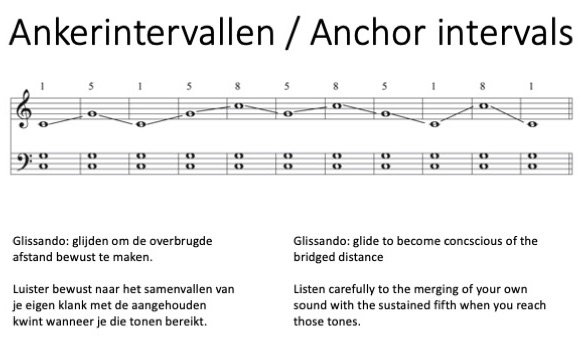
Triadic patterns
Exercise 1: Sing/play the given arpeggio forms of the 4 triads major, minor, diminished, augmented; starting from random pitches.
Note examples:


NB There are no clefs, key signatures or accidentals given, just the placement of the notes on the staff...
Exercise 2: Practice also starting on different pitches while singing note names...
Cognitive exercise 1:
Build all triads from a random note:
- given note is the root
- given note is the third
- given note is the fifth
Level of achievement: correct triad within 5 seconds. Including writing.
Romanesca (our first partimento pattern)

Also in minor... downward natural and upward with raised 6 and 7.
Sing/play all voices/parts in different keys also using note names (when singing).
Exercises in figuration to be added later.
Check also this nice video about the Romanesca created by Elam Rotem, (the guy behind earlymusicsources.com):
Autumn Leaves
Lead sheet JPG
Harmonic pattern A section: Chain of dominants with seventh chords.
(major 7, minor 7, half diminished 7, dominant 7)
Interval pattern outer voices: 3 - 7 - 3 - 7 - 3 - 7 - 3
Common note and voice leading
Exercises:
- Sing all voices/parts.
- Sing the melody while playing the bass line
- Sing the melody while playing the keyboard setting
Keyboard setting of the A section:

Keyboard setting of the B part:
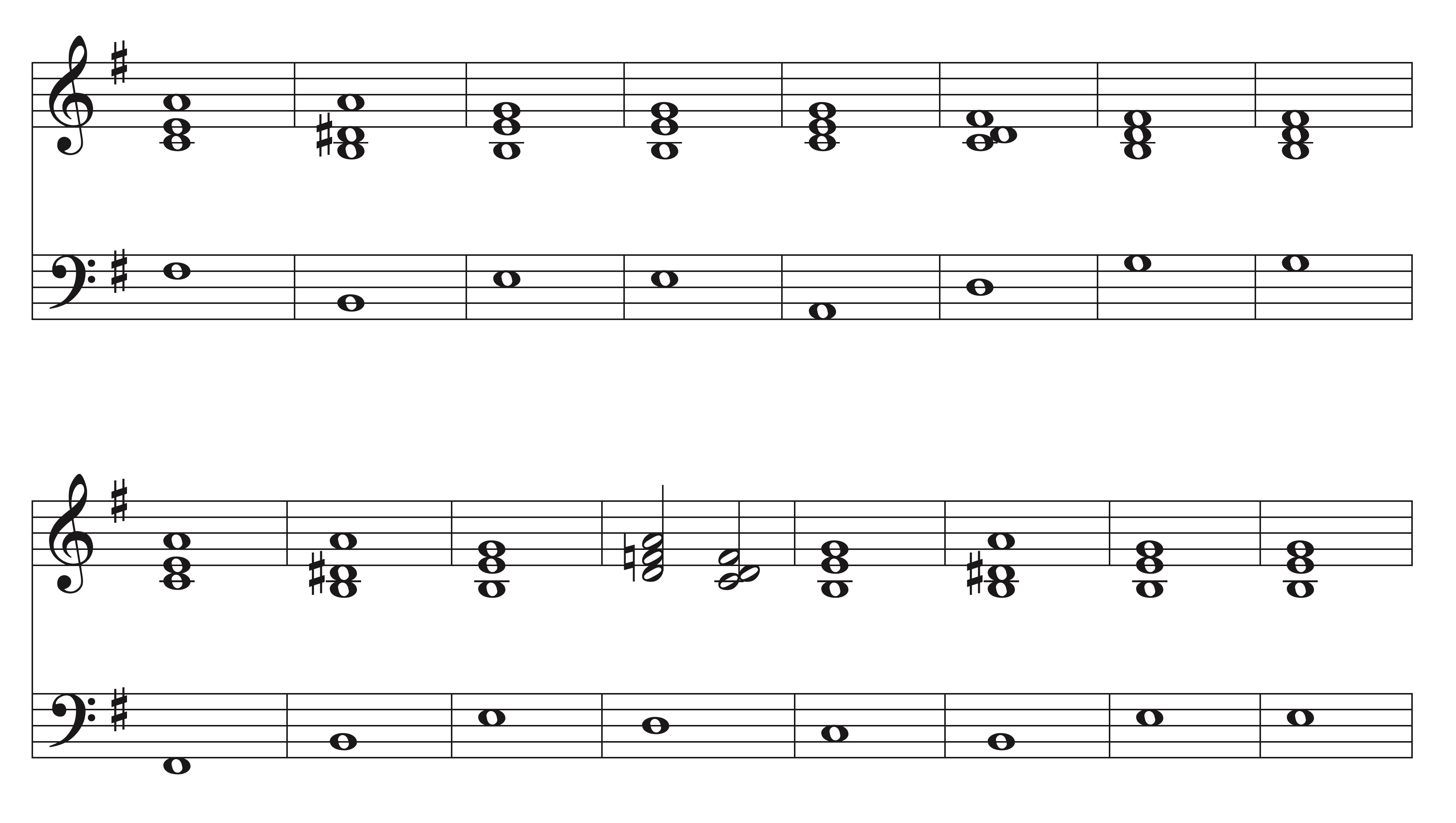
Lesson 2: Navigating in scale patterns
Introduction www.artusimusic.com
Modal scale patterns
The ability to navigate playing/singing fluently and elegantly in diatonic pitch space is indispensible (also without notation).
Watch the explanation and demonstration in the VIDEO (see submenu at the right).
You should be able to sing/play the following modal scale patterns fluently:
- Ionian (= major)
- dorian
- phrygian
- lydian
- mixolydian
- aeolian (=natural minor)
The fifth is the "anchor" of each pattern. You move one step beyond the fifth and one step below the starting note.
Each half step is indicated with a *.
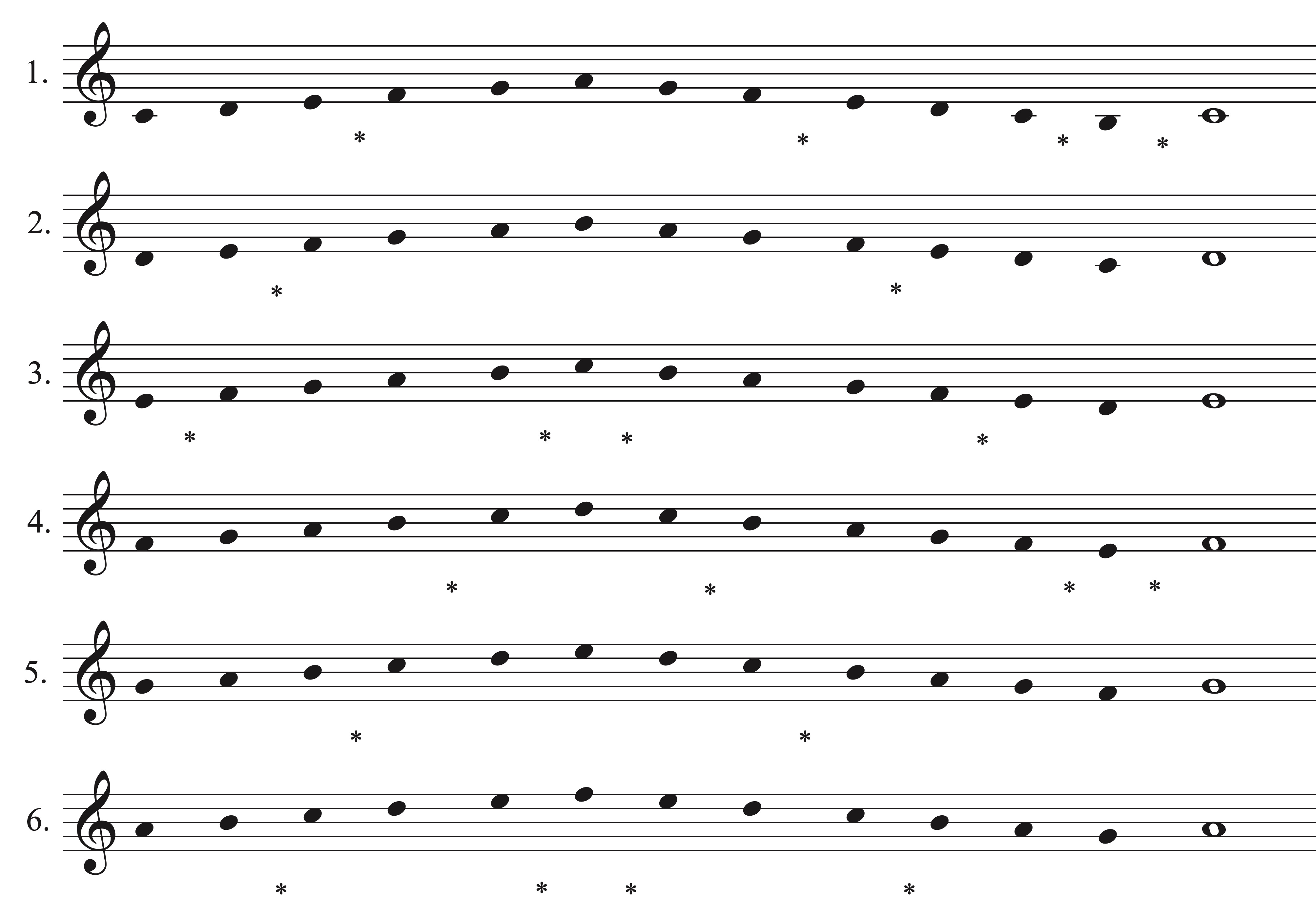
Sing of each also the following pattern: 1-5-6-5-1-7-8
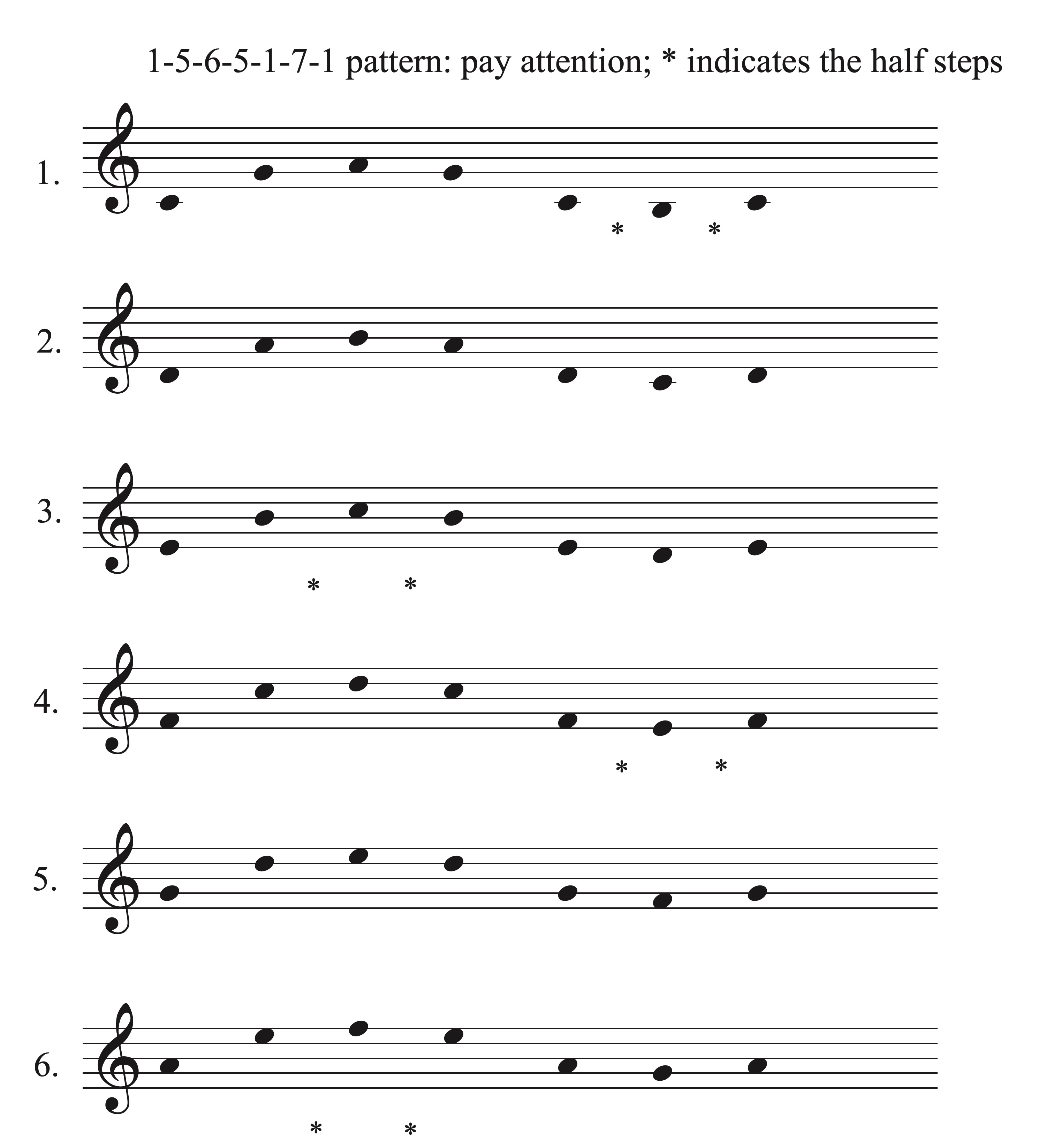
Sing of each also the following pattern: 1-3-5-6-5-3-1-7-1:
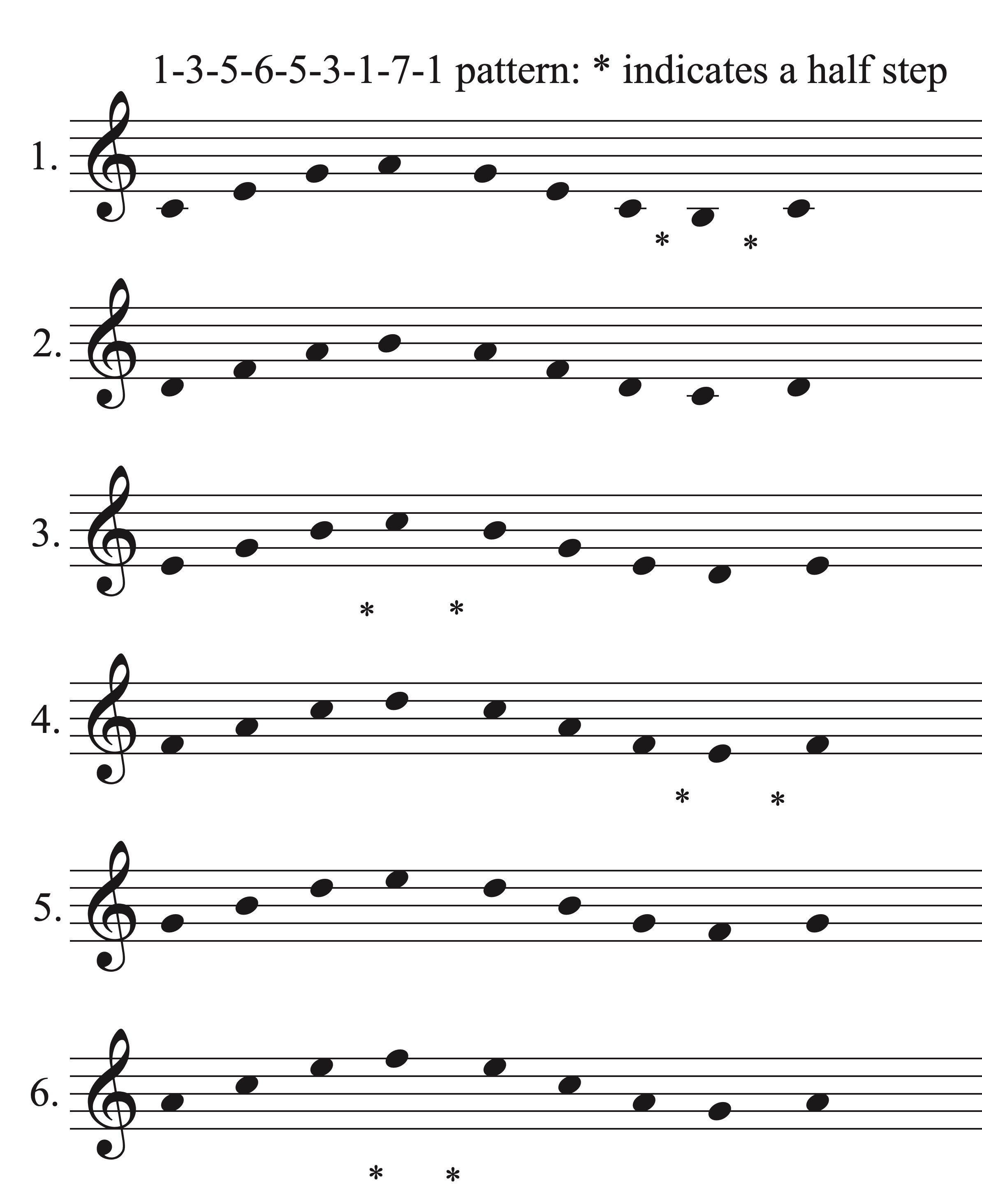
Lesson 3
Hearing outer voices: Vivaldi Stravaganza Op. 4
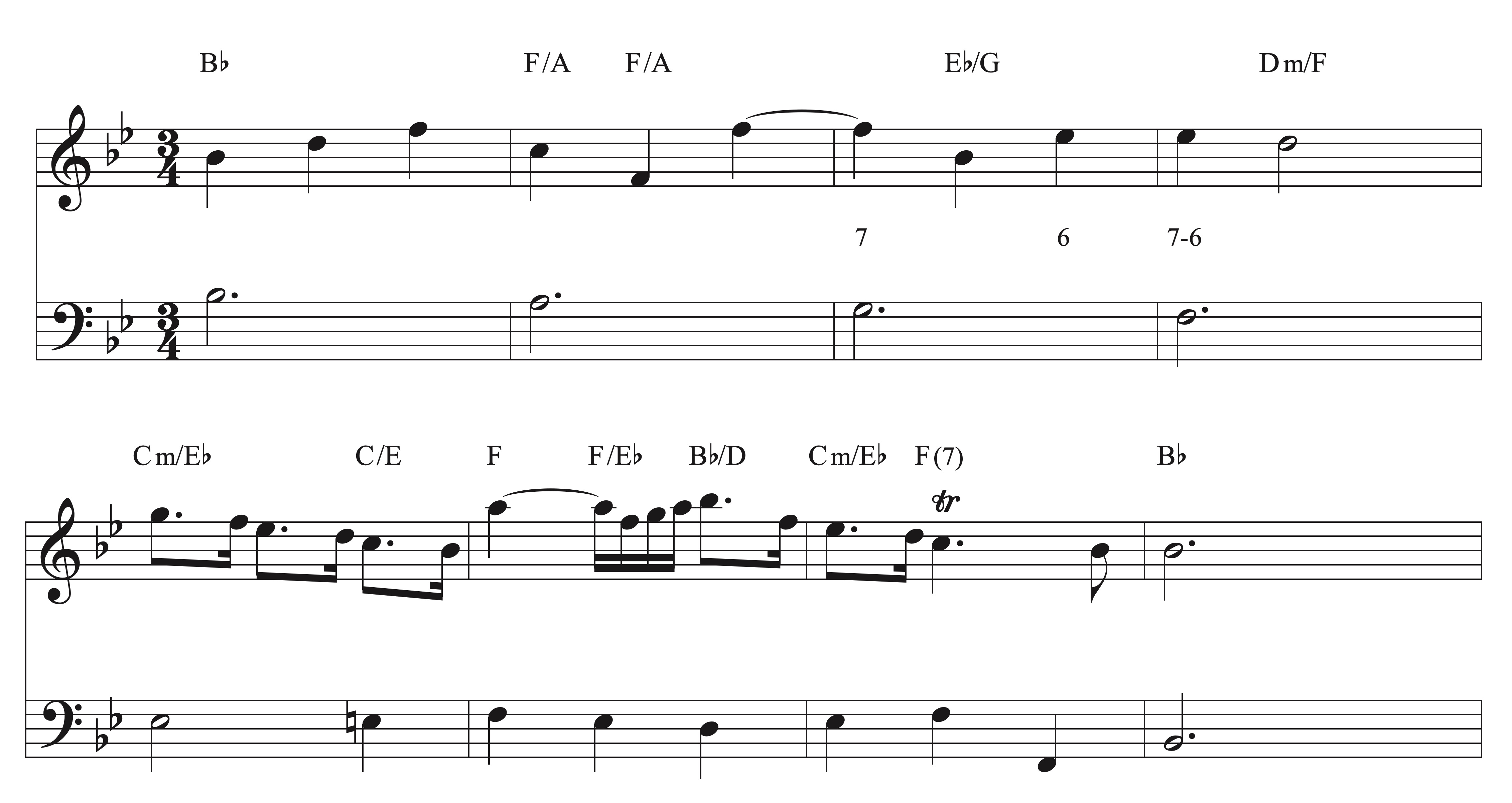
Artusi introduction: www.artusimusic.com
Lesson 4
Additional scale patterns (major/minor)
A new scale pattern:
1-2-1-3-1-4-1-5-1-6-1-7-1-8-1
and
8-7-8-6-8-5-8-4-8-3-8-2-8-1
In major:

and

In minor: ascending "melodic", descending natural/aeolian

and

Traplopen en Springstof:
The seventh chords of autumn leaves, including the B section.



